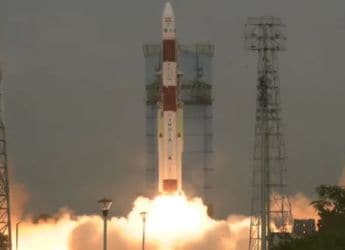- Home
- Transportation
- Transportation Features
- Alphabet Lawsuit Against Uber Cements End of Uneasy Marriage
Alphabet Lawsuit Against Uber Cements End of Uneasy Marriage

When Uber Technologies Inc was raising venture capital in 2013, it was one of the hottest deals around - and no one was more eager to write a check than Bill Maris and David Krane of Google's venture capital arm.
Not everyone at Google Ventures, since renamed GV, agreed. The firm already had an investment in a competitor, Sidecar, and Uber was demanding what then looked like a sky-high valuation.
Maris and Krane prevailed, and the deal is now regarded as GV's greatest success. On paper, the firm's initial 2013 investment of $258 million gained about 14 times its value over the next three years to more than $3.5 billion.
But now Alphabet, Google's corporate parent, is suing Uber for theft of trade secrets, alleging that one of the top engineers in its self-driving car program decamped with thousands of confidential files, including designs that helped him start self-driving truck company Otto and then quickly sell it to Uber. Uber denies those claims.
The lawsuit, filed by Alphabet's self-driving car unit Waymo, has jolted the fast-growing and highly competitive industry that has sprung up around autonomous vehicles and ride services, which are seen as the future of private road transport.
Yet the confrontation was a long time in the making: the complex relationship between the companies was tense from the start, according to people familiar with the situation, and soured further as they increasingly competed with each other.
Now, if the Waymo suit damages Uber, GV's investment in the ride-hailing company stands to go down as a Silicon Valley rarity: a large funding deal undermined by the firm's own investors.
"Whatever Waymo gains, Google Ventures loses," said Stephen Diamond, associate professor of law at Santa Clara University.
The lawsuit is just one in a series of recent public setbacks for Uber, including allegations of sexual harassment that prompted an internal investigation, a video of Chief Executive Travis Kalanick arguing with an Uber driver that led him to make a public apology, and Uber's admission on Friday that it used a secret tracking tool to avoid authorities.
"We have reviewed Waymo's claims and determined them to be a baseless attempt to slow down a competitor and we look forward to vigorously defending against them in court," Uber said in a statement in response to the lawsuit. "In the meantime, we will continue our hard work to bring self-driving benefits to the world."
A spokeswoman for GV declined to comment.
Deal at any cost
Uber was more than just another investment for then-fledgling Google Ventures, which needed a high-profile deal to put it on the map.
Maris and Krane were early Uber fans, but it took about two years for the pair to connect with Kalanick. When Uber investor Benchmark finally brokered a meeting in May 2013, the Google Ventures partners were determined to do a deal at virtually any cost, according to two sources close to the transaction.
With other would-be investors waiting in adjacent conference rooms at Uber's San Francisco offices, Maris and Krane made their pitch to invest. Kalanick pushed for a higher valuation, without a board seat; Google Ventures pushed back, asking for a board observer seat and a liquidation preference for protection if Uber was sold at a loss, one of the sources said.
They finally came to terms, with a $3.5 billion valuation, and there were signs that a broader alliance could be in the offing. Separately, David Drummond, Google's senior vice president of corporate development, had a social relationship with Kalanick, and he joined the board.
A ride in a self-driving car and a meeting with Google CEO Larry Page, recounted in Brad Stone's recent book "The Upstarts," seemed to bode well for the relationship.
But conflicts emerged immediately. Kalanick, a tough negotiator, wanted a discount on the software tools behind Google Maps, the company's ubiquitous mapping software, according to a person close to the transaction. The best Google Ventures could offer was close contact between Uber and Google's mapping team, the person said.
Kalanick also wanted Uber to be featured prominently in Google Maps, eventually giving customers a way to hail an Uber ride directly from Maps, and Google agreed, a source close to Uber said. But Uber felt Google dragged its heels on the integration and found the initial rollout disappointing, the source said.
The friction only grew as Uber turned its attention to autonomous driving, an area where Google had already established an early lead. Uber announced its intentions in typically abrupt style in early 2015, poaching 40 faculty and researchers from Carnegie Mellon University to set up a self-driving lab in Pennsylvania.
It bought mapping software firm deCarta and began investing heavily in its own mapping systems. Meanwhile, Google launched an on-demand delivery service, a market Uber is also chasing, and began offering a carpooling service through driving app Waze, which it acquired in 2013. The carpooling feature in particular rankled Uber, a source close to the company said.
"Things escalated from frenemy to now enemy quite quickly," said Anand Sanwal, CEO and co-founder of venture capital research firm CB Insights.
The tension bubbled to the surface last August, when Drummond stepped down from Uber's board.
Uber declined comment on any of its dealings with Google and did not make Kalanick available for an interview.
Undermined by its own investors?
Uber's aggressive culture was the subject of many conversations at Google Ventures, a source close to the transaction said. Hoping to influence the startup, the venture firm at first encouraged a flow of talent from Google to Uber.
Yet that too ultimately created problems. Anthony Levandowski, a key engineering manager at the self-driving car unit, now called Waymo, began to talk openly about leaving the company as the autonomous vehicle field blossomed, according to Alphabet's lawsuit.
In January 2016, Levandowski and some colleagues quit Alphabet to form the self-driving truck start-up Otto, which Uber acquired later that year for $680 million. Alphabet claims in its lawsuit that Levandowski had been in touch with Uber even before he left Alphabet.
In the lawsuit, Alphabet alleges Levandowski downloaded 14,000 proprietary design documents and used them to create Otto's - and later Uber's - version of a key autonomous vehicle technology called Lidar, which uses light pulses reflected off objects to gauge their position.
Uber and Levandowski deny the allegations.
The high-stakes legal showdown over whether vital information was transferred between the two companies is perhaps the logical conclusion of their opaque relationship.
All along, Uber remained mysterious to its Google Ventures investors. Kalanick was adamant from the start that he would share little information, and try as it might, Google Ventures could not gain better visibility over time, two sources said. If anything, Kalanick grew more tight-lipped as his business matured.
"It was one of the few companies where we sat there and said, 'Hope it goes well,'" one of the sources said.
© Thomson Reuters 2017
Catch the latest from the Consumer Electronics Show on Gadgets 360, at our CES 2026 hub.
Related Stories
- Samsung Galaxy Unpacked 2025
- ChatGPT
- Redmi Note 14 Pro+
- iPhone 16
- Apple Vision Pro
- Oneplus 12
- OnePlus Nord CE 3 Lite 5G
- iPhone 13
- Xiaomi 14 Pro
- Oppo Find N3
- Tecno Spark Go (2023)
- Realme V30
- Best Phones Under 25000
- Samsung Galaxy S24 Series
- Cryptocurrency
- iQoo 12
- Samsung Galaxy S24 Ultra
- Giottus
- Samsung Galaxy Z Flip 5
- Apple 'Scary Fast'
- Housefull 5
- GoPro Hero 12 Black Review
- Invincible Season 2
- JioGlass
- HD Ready TV
- Laptop Under 50000
- Smartwatch Under 10000
- Latest Mobile Phones
- Compare Phones
- Vivo Y500i
- OnePlus Turbo 6V
- OnePlus Turbo 6
- Itel Zeno 20 Max
- OPPO Reno 15 Pro Mini 5G
- Poco M8 Pro 5G
- Motorola Signature
- Vivo Y50e 5G
- Lenovo Yoga Slim 7x (2025)
- Lenovo Yoga Slim 7a
- Realme Pad 3
- OPPO Pad Air 5
- Xiaomi Watch 5
- Huawei Watch 10th Anniversary Edition
- Acerpure Nitro Z Series 100-inch QLED TV
- Samsung 43 Inch LED Ultra HD (4K) Smart TV (UA43UE81AFULXL)
- Asus ROG Ally
- Nintendo Switch Lite
- Haier 1.6 Ton 5 Star Inverter Split AC (HSU19G-MZAID5BN-INV)
- Haier 1.6 Ton 5 Star Inverter Split AC (HSU19G-MZAIM5BN-INV)
















